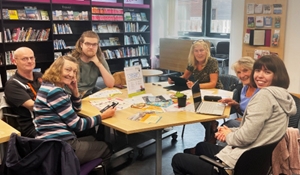New strategy celebrates success and sets out digital direction for the future
Telford & Wrekin Council’s Cabinet will be asked to approve a new digital strategy next week, setting out the digital direction for the Council and the borough next three years.
At their meeting on Thursday 7 November, Cabinet members will review the success of the council’s digital strategy for 2021 to 2023, before being asked to agree the new strategy for 2024 to 2027, a forward-thinking plan aimed at transforming the borough into a more connected, inclusive, and innovative community.
Titled “Telford Connected – creating a better borough through digital innovation”, the strategy sets out how digital technology will continue to be harnessed to deliver better services, improve lives, drive economic growth and help to create a better borough through digital transformation.
The new digital strategy, which will see £12.5m invested over the next three years, builds on previous successes and steers the borough towards a technology-driven future, at the same time ensuring no one is left behind. Key highlights including:
- Digital customers: Expanding on the award-winning “Ask Tom” digital assistant and “My Telford” app, the Council will continue to offer convenient, accessible online services. Since introduction, Ask Tom has reduced caller waiting times by over 50 percent, and provided access to more than 100 council services, 24-hours-a-day. New AI-driven enhancements, including a digital telephony assistant, will continue to streamline customer interactions, making it easier to access Council services.
- Digital care and support: The strategy aims to promote independence by integrating digital health solutions like virtual care, assistive technology, and shared health records. The introduction of digital social care records has already led to a 17% reduction in hospital admissions from care homes.
- Digital economy and skills: Telford will be positioned as a hub for innovation, with initiatives like the new Station Quarter Quad, a hub for digital training, business incubation and entrepreneurship. To ensure that no one is left behind, the council currently provides free Wi-Fi at public buildings, with free-to-use computers and device lending schemes at some libraries too. Building on the success of recent six-week digital skills courses for over 65s and due to popular demand, the council now runs six drop-in sessions each week across the borough, open to all ages and supported by Digital Champion volunteers.
- Digital place: In collaboration with Virgin Media O2, the Council will enhance Gigabit and 5G connectivity, expanding high-speed internet access across both urban and rural areas. By 2026, 93.5% of all properties are expected to be covered by gigabit infrastructure, compared to the national target of 90%. This project is also supporting local community and voluntary sector organisations through Virgin Media O2’s Social Value commitment, which is providing free five-year internet connections for groups such as Madeley Community Café.
- Digital Council: The Council will continue to explore and adopt innovative technologies, from the new integrated digital council meeting livestreaming system, to making more use of data to assess performance and best deliver services that meet the needs of communities.
Councillor Zona Hannington, Telford & Wrekin Council’s Cabinet Member for Finance, Governance and Customer Services, said:
“Our customers, who are made up of residents and stakeholders in the Borough, are at the heart of everything we do, and we want to make sure that we maximise the potential of digital technology in how we communicate and interact with our residents, customers and partner organisations through providing the right digital environment within communities.
“The new strategy highlights the initial actions planned, our progress made since the last Digital Strategy 2021 to 2023 and our aims through to the end of 2026/27.
“Ultimately, this strategy will help us create a better borough through digital innovation, allowing us to continue to maximise the potential of digital technology in how we communicate and interact with our residents, customers and partners, at the same time as ensuring that people who are not digitally engaged are not left behind.”

